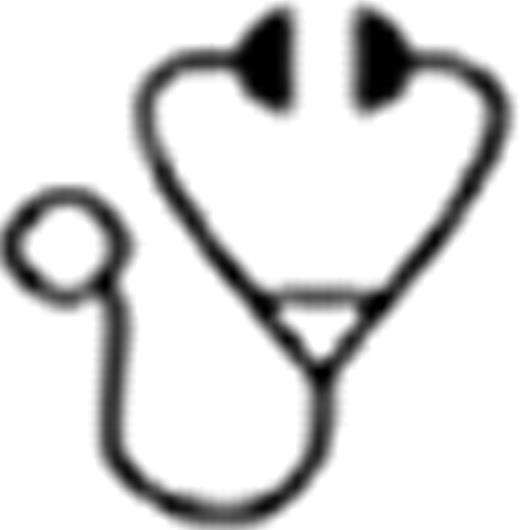Abstract
Abstract  2134
2134
BABY HUG randomly assigned children with sickle cell anemia ages 9 to 18 months at entry to a two-year double-masked treatment course of 20 mg/kg/d of hydroxyurea (HU) or placebo (PBO). The primary goal of this clinical trial was to determine if treatment with HU could reduce organ damage or dysfunction (spleen function assessed by 99mTc-sulfur colloid and renal function by 99mTc-DTPA clearance) by 50%. Children were seen at least monthly for blood and clinical evaluations. [Lancet 2011; 377(9778):1663–1672.]
Between March 23, 2006 and June 1, 2006, the BABY HUG study was placed on “clinical hold” due to the omission of an expiration date on the treatment label for one lot of the study treatments. During the clinical hold, there were 94 children on active study treatment (47 HU, 47 PBO); four and six children, respectively, had finished their two-year follow up. Subjects continued regular visits and clinical event monitoring but received no study medication. To examine the impact of the clinical hold on toxicity and clinical events, the BABY HUG study period was divided into three intervals: Before, During, and After the clinical hold. Each period was offset by a one-month delay from the actual onset and end date to allow for wash-out and wash-in periods surrounding the clinical hold. The clinical hold produced both hold effects (effects produced by the hold that were consistent in the two treatment groups) and treatment-hold interaction effects (hold effects that were different by treatment). The interaction effects are presented below.
The table presents the rate or prevalence of selected clinical events during each interval. The rate of pain, one of the clinical events shown to benefit from treatment with HU, was comparable to the PBO rate during the clinical hold but was significantly lower in the pre- and post-hold intervals. The prevalence of splenomegaly (defined by palpation ≥2 cm below the costal margin), which was slightly greater in the HU group than in the PBO group during the pre- and post-hold intervals, increased to a four-fold difference during the clinical hold. There was no difference between the groups in the rate of splenic sequestration in any interval.
Clinical Events Before, During and After Clinical Hold+
| . | Before Hold . | During Hold . | After Hold . | |||||||||
|---|---|---|---|---|---|---|---|---|---|---|---|---|
| HU 55.1* | PBO 50.3* | HU 8.3* | PBO 7.8* | HU 125.1* | PBO 126.8* | |||||||
| AE | No. | Rate | No. | Rate | No. | Rate | No. | Rate | No. | Rate | No. | Rate |
| Dactylitis | 5 | 9.1 | 34 | 67.6 | 1 | 12.0 | 3 | 38.5 | 18 | 14.4 | 86 | 67.8 |
| Pain | 34 | 61.7 | 72 | 143.1 | 14 | 168.7 | 15 | 192.3 | 129 | 103.1 | 288 | 227.1 |
| Splenomegaly^ | 30 | 54.4 | 20 | 39.8 | 14 | 168.7 | 3 | 38.5 | 83 | 66.3 | 65 | 51.6 |
| Lab Results | Mean | Mean | Mean | Mean | Mean | Mean | ||||||
| Retic Ct (k/mm3) | 191.5 | 329.4 | 300.5 | 327.3 | 237.0 | 335.4 | ||||||
| Hgb (gm/dL) | 10.07 | 8.69 | 9.09 | 8.73 | 9.28 | 8.69 | ||||||
| MCV (fL) | 86.84 | 81.90 | 82.82 | 79.85 | 85.00 | 80.00 | ||||||
| . | Before Hold . | During Hold . | After Hold . | |||||||||
|---|---|---|---|---|---|---|---|---|---|---|---|---|
| HU 55.1* | PBO 50.3* | HU 8.3* | PBO 7.8* | HU 125.1* | PBO 126.8* | |||||||
| AE | No. | Rate | No. | Rate | No. | Rate | No. | Rate | No. | Rate | No. | Rate |
| Dactylitis | 5 | 9.1 | 34 | 67.6 | 1 | 12.0 | 3 | 38.5 | 18 | 14.4 | 86 | 67.8 |
| Pain | 34 | 61.7 | 72 | 143.1 | 14 | 168.7 | 15 | 192.3 | 129 | 103.1 | 288 | 227.1 |
| Splenomegaly^ | 30 | 54.4 | 20 | 39.8 | 14 | 168.7 | 3 | 38.5 | 83 | 66.3 | 65 | 51.6 |
| Lab Results | Mean | Mean | Mean | Mean | Mean | Mean | ||||||
| Retic Ct (k/mm3) | 191.5 | 329.4 | 300.5 | 327.3 | 237.0 | 335.4 | ||||||
| Hgb (gm/dL) | 10.07 | 8.69 | 9.09 | 8.73 | 9.28 | 8.69 | ||||||
| MCV (fL) | 86.84 | 81.90 | 82.82 | 79.85 | 85.00 | 80.00 | ||||||
Rates in bold are significantly different at p < 0.05 within each time period
Person Years of Exposure
Prevalence
Hematologic changes showing a treatment-period interaction included a significantly larger difference in absolute reticulocyte count between the HU and placebo group During the Hold as compared to Before and After. The HU-induced increase in Hb and MCV was significantly diminished During the Hold. All measurements moved back towards their pre-hold differences after the hold was lifted.
The clinical hold in BABY HUG provided an unforeseen opportunity to study the clinical and laboratory impact of cessation of HU therapy for a brief time period. No serious clinical effects or toxicities occurred during the clinical hold, perhaps due to its limited time span. Parents and physicians should be aware that stopping HU therapy may result in increased episodes of pain or splenic enlargement.
Off Label Use: Hydroxyurea which is not approved for use in children with sickle cell disease. Casella:Adventrix: Honoraria.
Author notes
Asterisk with author names denotes non-ASH members.

This icon denotes a clinically relevant abstract

This feature is available to Subscribers Only
Sign In or Create an Account Close Modal